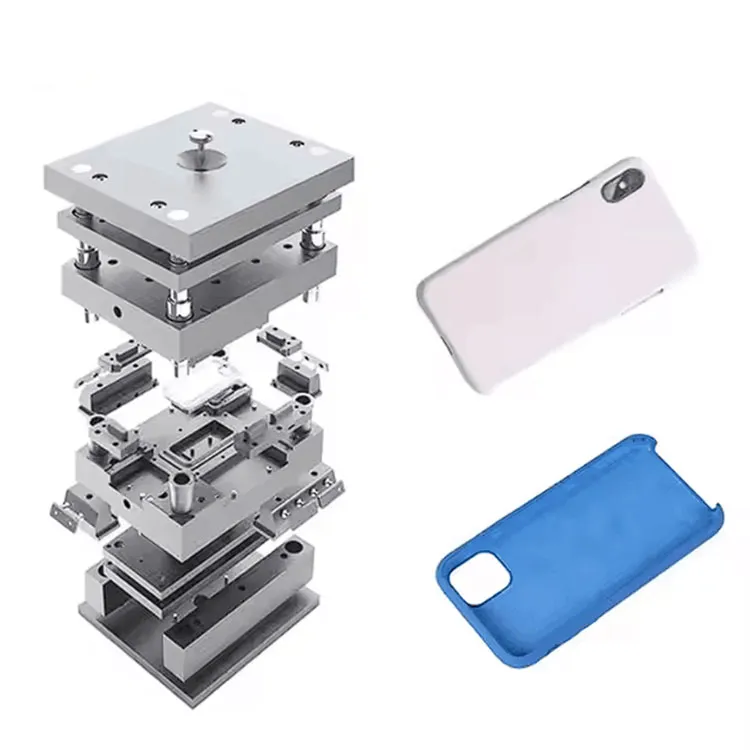Overcoming the Challenges of Phone Case Molding: Strategies for High-Quality Production
2024-11-15
The process of molding phone cases may seem straightforward, but it involves a variety of complex steps that must be carefully managed to achieve a high-quality product. Manufacturers must contend with several challenges throughout the production cycle, from mold design to material choice and quality control. In this blog, we will explore additional challenges in phone case molding and discuss practical solutions that manufacturers can implement to ensure the best possible outcome.
1. Mold Cooling and Cycle Time Optimization
One of the primary factors affecting the speed and cost of phone case production is cycle time, which refers to the time it takes for the mold to complete one full cycle from injection to removal. Inefficient cooling can lead to longer cycle times, which directly impacts production efficiency and costs. Additionally, improperly cooled molds may result in uneven molding or defects like warping.
Solutions:
- Optimizing Cooling Systems: Incorporating optimized cooling channels into the mold design ensures more uniform cooling of the phone case, reducing cycle times and improving consistency. Efficient cooling also minimizes the risk of internal stresses that cause defects.
- Advanced Mold Materials: Using materials like beryllium-copper for mold cores can enhance heat transfer properties and speed up cooling. These materials help to reduce cycle time without compromising product quality.
2. Inconsistent Material Properties and Quality Control
For phone case manufacturers, using consistent, high-quality material is crucial to achieving uniformity in production. Variations in the quality or characteristics of the molding material can lead to defects such as brittleness, uneven texture, or color inconsistencies in the final product. This issue often arises when using low-quality or incompatible materials.
Solutions:
- Material Testing and Quality Control: Conducting rigorous material testing before production begins can help identify any inconsistencies. Testing for properties such as tensile strength, flexibility, and color consistency ensures that the material chosen meets the desired specifications for the phone case.
- Reliable Suppliers: Choosing a trusted and reliable material supplier is key to ensuring consistency in material properties. Manufacturers should work closely with suppliers to ensure that only high-quality, compatible materials are used for molding.
3. Underfilling and Overfilling of Molds
Properly filling the mold is critical to ensuring the phone case’s final quality. Underfilling occurs when the mold cavity isn’t completely filled, leaving gaps or incomplete shapes, while overfilling can cause flash or excess material to spill over the edges of the mold, resulting in a messy finish.
Solutions:
- Careful Mold Design and Calibration: The mold design should be optimized for consistent material flow and filling. By calibrating the mold to account for material shrinkage and ensuring adequate injection speed and pressure, manufacturers can avoid both underfilling and overfilling.
- Use of Advanced Injection Systems: Modern injection molding machines come with precision injection control systems that monitor and adjust the injection parameters in real-time, ensuring that the mold is filled consistently without excess material.
4. Environmental Impact and Sustainability
As consumers become more environmentally conscious, phone case manufacturers face increasing pressure to produce eco-friendly products. However, balancing environmental considerations with production efficiency can be a challenge. The use of non-recyclable materials, excessive waste, or inefficient manufacturing processes can have negative environmental impacts.
Solutions:
- Eco-Friendly Materials: Switching to biodegradable plastics or recycled materials for phone cases can significantly reduce environmental impact. Manufacturers can explore options like recycled PET or bioplastics, which provide sustainable alternatives to traditional plastics.
- Energy-Efficient Production: Optimizing molding processes to reduce energy consumption and waste can also make a big difference. Manufacturers can invest in more energy-efficient molding machines and adopt zero-waste practices to improve sustainability.
The phone case molding process is complex and requires careful attention to detail at every stage. By understanding the challenges involved and implementing effective solutions, manufacturers can achieve high-quality, durable phone cases that meet consumer expectations. From optimizing cooling systems and material properties to addressing issues like surface defects and warping, overcoming these common challenges ensures that the final product is both functional and aesthetically pleasing. Additionally, focusing on sustainability can lead to a more eco-friendly production process, benefiting both the manufacturer and the environment.



